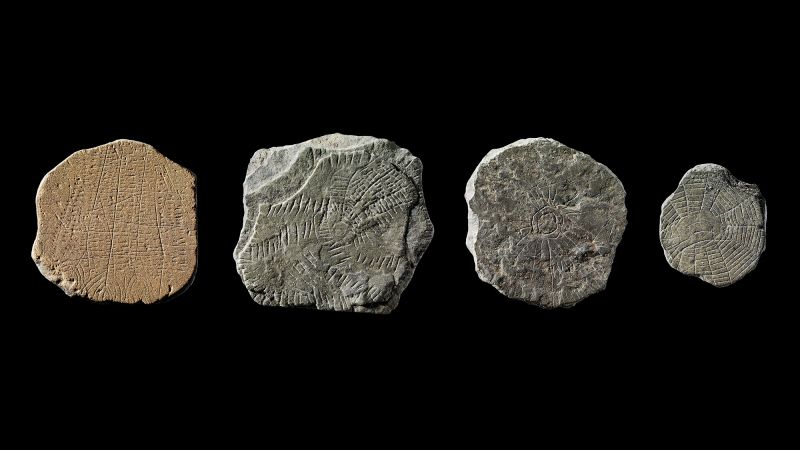Recent archaeological findings in Denmark have shed light on how Stone Age societies responded to a catastrophic volcanic eruption that occurred roughly 5,000 years ago. This discovery came from the excavation of numerous unusual discs, referred to as “sun stones,” which were unearthed at various Neolithic sites across the Danish island of Bornholm. These stone artifacts have sparked considerable interest among scientists eager to understand the climatic and cultural shifts faced by ancient populations amid significant environmental changes.
The first sun stone was identified at Rispebjerg, a Neolithic site located approximately 112 miles (180 kilometers) southeast of Copenhagen. Discovered in 1995, the stones were distinguished by their intricate carvings, notably designs that evoke the sun, with a central circle from which rays extend outward. Some stones displayed additional motifs, including plant-like symbols or depictions of agricultural harvests. These artifacts led archaeologists to theorize that the inhabitants of this region held the sun in high esteem, associating it with their agricultural practices.
Following continued explorations between 2013 and 2018 at another Neolithic site known as Vasagård, about 6.2 miles (10 kilometers) northwest of Rispebjerg, archaeologists uncovered hundreds more sun stones, largely crafted from local shale. Uniquely, these stones appeared to have been deliberately buried, prompting questions about the motivations behind their interment. Scientific investigation connected these burials to a significant climatic cooling event that occurred around 2900 BC, coincidentally correlating with the time of the sun stones’ deposition. This climate change was linked to a massive volcanic eruption, the evidence of which was recorded in geological sediments from Germany and ice core data from Greenland and Antarctica.
The research, led by Rune Iversen, an archaeologist and associate professor at the Saxo Institute at the University of Copenhagen, notes that the eruption is estimated to be of comparable magnitude to Alaska’s Okmok volcano eruption in 43 BC. The Okmok eruption caused substantial climatic disruptions, resulting in crop failure and famine in ancient societies. Given these findings, it is theorized that a similar situation unfolded in Neolithic Denmark post-2900 BC due to the earlier volcanic event. The unprecedented climate impacts would have posed challenges for a population reliant on agriculture, likely prompting them to seek rituals or expressions of gratitude toward the sun, hence the creation and burial of the sun stones.
Interestingly, the creation of such representational artifacts during this time indicates profound social and cultural implications among the people of Bornholm, unlike their previous artistic expressions. It suggests that this period may have marked a cultural response to a crisis, signifying the community’s dependence on solar patterns for agricultural activities such as sowing and harvesting. The act of burying the sun stones may have served as a symbolic gesture—akin to planting seeds—expressing hopes for restored sunlight and renewed agricultural productivity.
The rituals conducted at the sites of Rispebjerg and Vasagård highlight a communal approach to addressing ecological disasters. These ritualistic gatherings were not just for fishing or harvesting but held deep significance beyond mere agricultural practices. There were longstanding traditions of communal ceremonies in Neolithic Europe, and in this instance, there appears to be a rich possibility that the sun stones served both as acknowledgments of the dire climate conditions and expressions of collective hope for restoration.
The connection between the era’s volcanism and the ceremonial practices around these sun stones opens a plethora of inquiries into the social constructs of ancient people. Questions arise as to whether the sun stone rituals were isolated to Bornholm or part of a broader religious movement across Europe that honored the sun as a deity. Furthermore, it begs the question of whether these practices could have influenced monumental constructions such as Stonehenge, linking them to early sun-worshiping traditions.
In conclusion, the unearthed sun stones of Neolithic Denmark illuminate a fascinating narrative of cultural resilience in the face of environmental upheaval. Not only do they underscore the agricultural dependence of early communities on celestial phenomena, but they also provide tangible links to ancient rituals that sought to negotiate the boundaries between nature and human existence. Such findings enrich the dialogue surrounding prehistoric societies and their intricate relationships with the natural world, sculpting an emerging framework for understanding early human spirituality and societal evolution.












